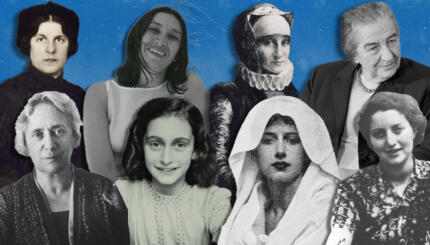Shalom Auslander’s memoir Foreskin’s Lament was published last week and seems to be selling quite well on Amazon. For those of you who missed all the pre-pub publicity, the book is a memoir of Auslander’s relationship with the angry, violent God his Orthodox family/education taught him to be terrified of.
The book is funny, sadder than you’d expect, and also a bit repetitive and over the top (not always in a good way). But despite its imperfections, I’ve been calling people to read them excerpts since I got a review copy several months ago.
Auslander grew up in Monsey, NY, and while his family may have leaned further to the right than mine, we were raised in similar worlds (and went to the same high school). While his book is very personal, it also gives glimpses of a certain Jewish upbringing until now not written about: the teenage life of sports, pot, girls, and Torah.
In some sense, Auslander also updates Philip Roth’s “The Conversion of the Jews”: we still have the skeptical troublemaker kid and the fire-and-brimstone rabbis, but the social landscape has radically changed. Roth gave us an urban, Eastern European-influenced Jewish milieu. Auslander takes us where Orthodoxy has gone in the last 50 years: to the suburbs, where, in many (though by no means all) communities, fundamentalism and materialism have had an unlikely, but happy marriage.
More from my latest column for the Jerusalem Post:
No doubt, those with ties to Orthodoxy will cringe when reading the book. As it turns out, Noah Feldman was just the opening act, and Auslander makes the gentleman from Harvard look like Emily Post.
Feldman was lambasted for his New York Times article about his relationship with his modern Orthodox alma mater after marrying a non-Jew, but to a certain extent, this was a sign that the community took him seriously. From the perspective of his critics, Feldman may have been a self-righteous shanda, but he was no fool. His Rhodes Scholarship ruled out that option.
Auslander, on the other hand, may very well be ignored by the Orthodox community. His profanity and hutzpa will be used to discredit his voice.
Which would be a shame.
Because buried under all of that dirty laundry is the first true literary depiction of a certain brand of American Orthodoxy. The brachos bee scene, in which young Shalom is pressured to recall the proper blessings for “ice cream in a cone,” is both priceless and utterly novel. Especially for those of us who passed through similar classrooms and challenges.
More importantly, there’s much in Auslander’s critique that’s valuable. While I may have been less tormented by my Orthodox education, Auslander’s basic gripes ring true. Fear and guilt are all too often the primary religious motivators. (MORE)
In addition to the the fear and guilt, I sometimes experienced depth, meaning, and beauty from Orthodoxy, but I have to admit, I’m glad Auslander didn’t write about those things. They’re not nearly as funny.
I’ll be interviewing Auslander at the 92nd Street Y in January, and for those of you in New York who are interested, you can buy tickets here.


